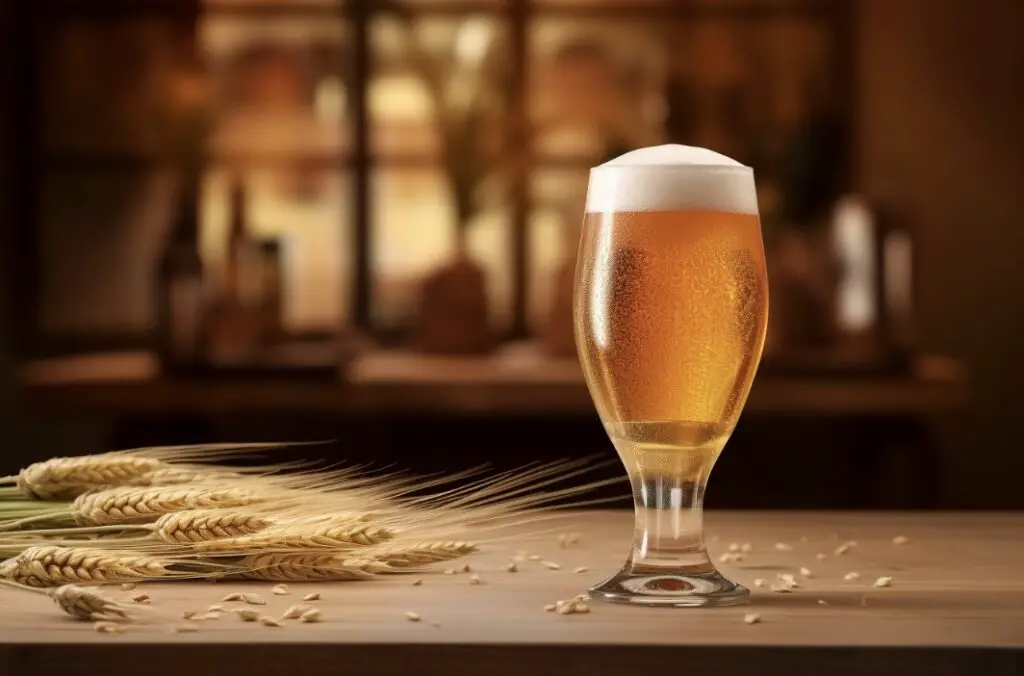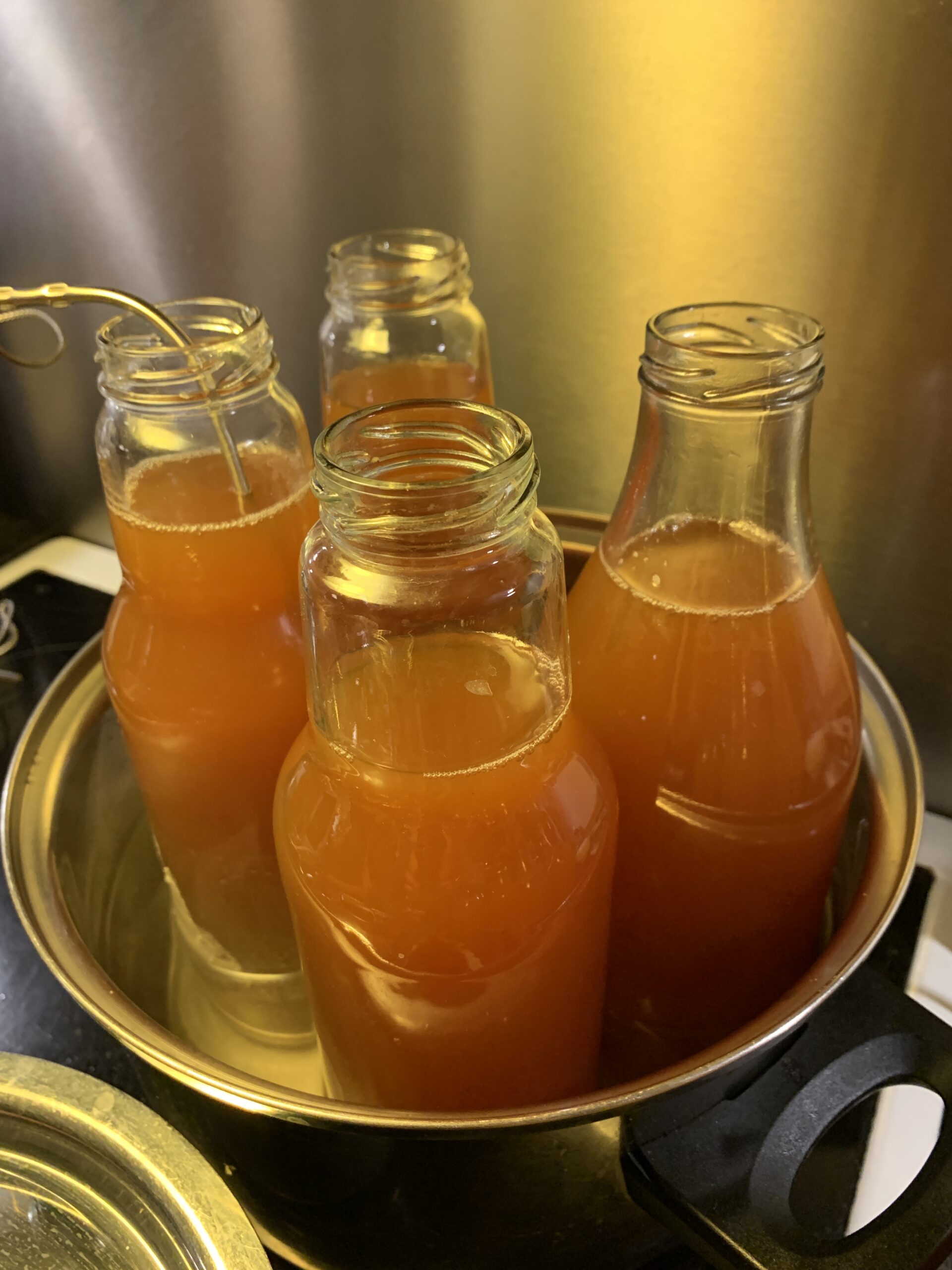As an expert brewer, I have spent years experimenting with different styles and ingredients to create unique and delicious beers. One question that often comes up is, “What is the difference between a farmhouse ale and a wheat beer?” In this blog post, I will explore the origins, characteristics, and brewing processes of these two distinct styles.
The main difference between farmhouse ale and wheat beer is that farmhouse ale is a broad category of rustic, often funky or sour beers with a wide range of flavors, while wheat beer is a specific type of beer made with a high percentage of wheat malt, resulting in a lighter, more refreshing taste.
By the end of this post, you will have a greater appreciation for the art of brewing and the subtle nuances that set farmhouse ales and wheat beers apart.
1. Origins of Farmhouse Ale
Farmhouse ale is a term used to describe a broad category of beers that originated in rural Europe, particularly in Belgium and France. These beers were traditionally brewed by farmers during the winter months and enjoyed during the summer, as a way to quench the thirst of farm workers.

Farmhouse ales are characterized by their rustic, earthy, and often funky or sour flavors, which are the result of the unique fermentation process and the use of local ingredients. The most well-known styles of farmhouse ales include Saisons and Bière de Garde.
2. Characteristics of Farmhouse Ale
Farmhouse ales can vary greatly in flavor, aroma, and appearance. This is because the term “farmhouse ale” is more of a concept than a strict definition. However, there are some common characteristics that many farmhouse ales share:
- Rustic, earthy flavors
- High carbonation levels
- Dry finish
- Low to moderate alcohol content (usually between 4-8% ABV)
- Use of local ingredients, such as spices, fruits, and herbs
Some farmhouse ales may also have funky or sour notes, due to the presence of wild yeast and bacteria during the fermentation process.
This can add an extra layer of complexity to the beer, creating a unique drinking experience.
3. Brewing Process of Farmhouse Ale
The brewing process of farmhouse ales is similar to that of other beers, but there are a few key differences. Firstly, the use of local ingredients is a hallmark of farmhouse ales, which can include anything from fruits and spices to wild yeast and bacteria.
Farmhouse ales are also known for their unique fermentation process. Traditional farmhouse brewers would often use open fermentation vessels, allowing wild yeast and bacteria to enter the beer and contribute their distinct flavors. This approach is less common in modern breweries, but some craft brewers still choose to use open fermentation to create authentic farmhouse ales.
4. Origins of Wheat Beer
Wheat beer, also known as Weissbier or Hefeweizen, is a specific type of beer that has been brewed for centuries, particularly in Germany and Belgium.
As the name suggests, wheat beer is made with a high percentage of wheat malt, which can be anywhere from 30-70% of the total malt bill. This gives wheat beer its characteristic light, refreshing taste and hazy appearance.
5. Characteristics of Wheat Beer
Wheat beers are known for their distinct flavor, aroma, and appearance, which set them apart from other beer styles. Some common characteristics of wheat beers include:
- Light, refreshing taste
- Hazy appearance, due to the high protein content in wheat malt
- High carbonation levels
- Fruity, spicy, or clove-like aromas, which are produced by the specific yeast strains used in wheat beer fermentation
- Low to moderate alcohol content (usually between 4-6% ABV)
6. Brewing Process of Wheat Beer
The brewing process for wheat beer is similar to that of other beers, but there are a few key differences. The most notable difference is the use of wheat malt in the grain bill, which contributes to the beer’s light, refreshing taste, and hazy appearance.
Wheat beers also use specific yeast strains, which produce fruity, spicy, or clove-like aromas during fermentation. These yeast strains are often top-fermenting, meaning they rise to the top of the fermentation vessel during the process. This is in contrast to many other beer styles, which use bottom-fermenting yeast strains.
7. Pairing Farmhouse Ales and Wheat Beers with Food
Both farmhouse ales and wheat beers can make excellent food pairings, thanks to their unique flavors and high carbonation levels. Farmhouse ales, with their rustic, earthy flavors, pair well with a wide range of foods, from rich and savory dishes like roasted meats and stews to light, fresh options like salads and seafood.
Wheat beers, on the other hand, are ideal for pairing with lighter, more refreshing dishes. Their fruity, spicy flavors complement dishes like salads, grilled vegetables, and seafood, while their high carbonation levels help to cleanse the palate between bites.
8. Personal Experience with Farmhouse Ales and Wheat Beers
As an expert brewer, I have had the pleasure of experimenting with both farmhouse ales and wheat beers in my brewing journey. I have always been drawn to the rustic, earthy flavors of farmhouse ales, and I enjoy the challenge of using local ingredients and unique fermentation processes to create one-of-a-kind beers.

Wheat beers, on the other hand, have become a go-to option for me during the warmer months, when I crave a light, refreshing beer to enjoy on a sunny day. I especially enjoy brewing wheat beers with added fruit, like orange or raspberry, for an extra burst of flavor.
Conclusion
In conclusion, the main difference between farmhouse ale and wheat beer is that farmhouse ale is a broad category of rustic, often funky or sour beers with a wide range of flavors, while wheat beer is a specific type of beer made with a high percentage of wheat malt, resulting in a lighter, more refreshing taste. Some key facts about these two distinct styles include:
1. Farmhouse ales originated in rural Europe and were traditionally brewed by farmers.
2. Farmhouse ales can have a wide range of flavors, from earthy and rustic to funky and sour.
3. Wheat beers have been brewed for centuries, particularly in Germany and Belgium.
4. Wheat beers are characterized by their light, refreshing taste and hazy appearance.
5. Both farmhouse ales and wheat beers typically have low to moderate alcohol content.
6. The brewing process for farmhouse ales often involves the use of local ingredients and open fermentation.
7. Wheat beers use specific yeast strains that produce fruity, spicy, or clove-like aromas during fermentation.
8. Farmhouse ales pair well with a wide range of foods, from rich and savory dishes to light, fresh options.
9. Wheat beers are ideal for pairing with lighter, more refreshing dishes like salads, grilled vegetables, and seafood.
10. Both farmhouse ales and wheat beers offer unique and delicious drinking experiences, showcasing the diverse world of brewing.
So the next time you find yourself trying to decide between a farmhouse ale and a wheat beer, remember the unique characteristics of each style and choose the one that best suits your mood, taste preferences, and the occasion. Cheers!
FAQs
What makes a beer a farmhouse ale?
A farmhouse ale is typically a rustic, unfiltered beer that is brewed with traditional ingredients and methods by farmers or rural brewers. It often has a fruity or spicy flavor profile and can be made with a variety of yeasts, including wild yeasts.
What is an American farmhouse ale?
An American farmhouse ale is a beer style that is inspired by the traditional Belgian saison style, but brewed with American ingredients and often with a higher hop profile. It is typically a light, effervescent beer with fruity and spicy notes, and is often brewed with a variety of grains, including wheat, rye, and oats.
What makes a farmhouse ale a farmhouse ale?
Farmhouse ales are typically brewed with a specific type of yeast, often a strain of saison yeast, and are known for their spicy, fruity, and earthy flavors. They are also often brewed with locally sourced ingredients and are often unfiltered and bottle-conditioned. The name “farmhouse ale” comes from their origins as beers brewed on farms in rural areas of Europe, often using ingredients grown on the farm itself.
What are the two styles of beer that are usually described as farmhouse style?
The two styles of beer that are usually described as farmhouse style are Saison and Bière de Garde.
Why is it called farmhouse ale?
Farmhouse ale is called so because it originated in the rural areas of Belgium and France where it was brewed by farmers for their own consumption. The beer was made using ingredients that were readily available on the farm, such as grains, hops, and herbs, and was often fermented with wild yeast strains. The style has since gained popularity and is now brewed by commercial breweries, but the name remains as a nod to its humble origins.
What does farmhouse ale mean?
Farmhouse ale refers to a style of beer that was traditionally brewed in rural areas of Europe, particularly in Belgium and France. These beers are typically made with local ingredients and are often fermented using wild yeast strains, which can give them a unique and complex flavor profile. Farmhouse ales can vary widely in terms of their strength, color, and flavor, but they are generally characterized by their dryness, effervescence, and rustic character.




